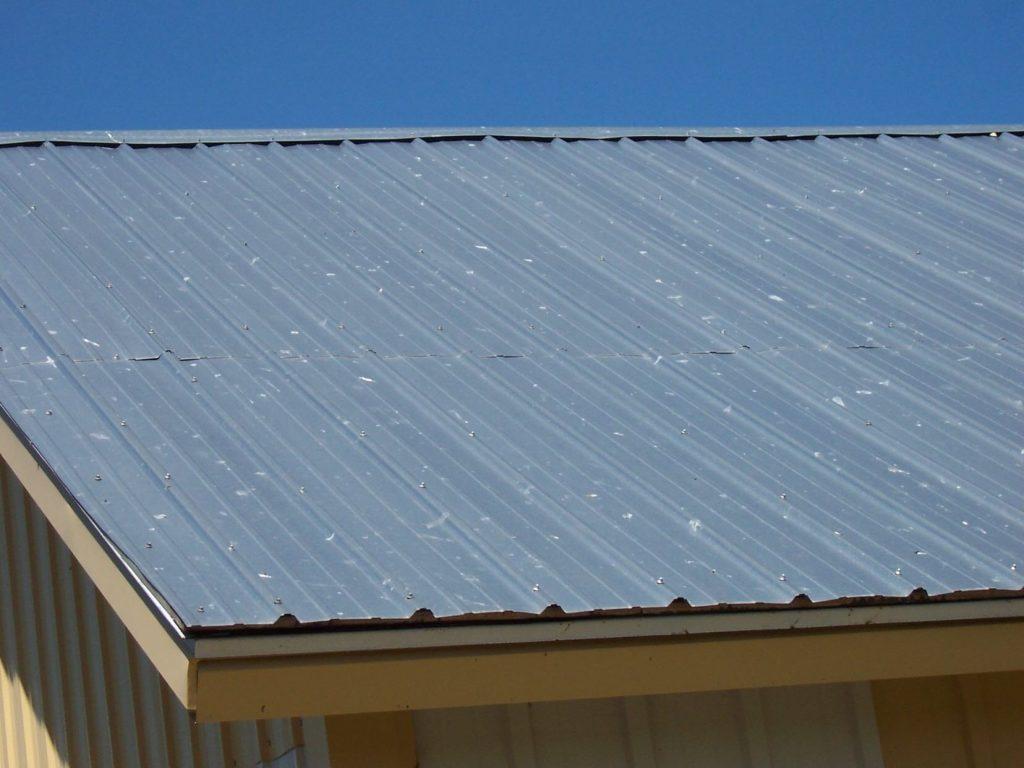Metal roofs are known for their durability and longevity, making them a popular choice for homeowners looking for a roofing material that can withstand various environmental challenges. However, one question that often arises is whether hail can damage a metal roof. In this article, we will explore this topic in-depth, examining the factors that contribute to a metal roof’s resilience against hail and what homeowners can expect in the event of a hailstorm.

Understanding the Resilience of Metal Roofs
The Strength of Metal
Metal roofs are prized for their strength and durability, and they are indeed highly resistant to many types of damage, including hail. However, several factors contribute to a metal roof’s ability to withstand hail:
1. Metal Type
The type of metal used in the roof plays a crucial role in its resistance to hail damage. Common metals for roofing include steel, aluminum, and copper, each with its own characteristics.
2. Thickness (Gauge)
The thickness of the metal, often referred to as its gauge, can impact its resilience. Thicker gauges are more resistant to hail impact.
3. Panel Design
The design of the metal panels, including their height, seam profile, and gauge, can affect their ability to withstand hail. Certain profiles may be more resistant due to their design.
4. Coatings
Many metal roofs are treated with protective coatings that enhance their resistance to environmental factors, including hail.
5. Substrate
The material beneath the metal panels, such as roof decking or underlayment, can provide additional protection against hail damage.
6. Installation Quality
The quality of the installation also plays a significant role. Properly installed metal roofing systems are less likely to sustain damage from hail.
The Impact of Hail on Metal Roofs
Understanding Hail Damage
While metal roofs are generally resilient, severe hailstorms can still cause damage. Here are some considerations regarding the impact of hail on metal roofs:
1. Size and Density of Hail
The size and density of hailstones are crucial factors. Larger, denser hailstones are more likely to cause damage, especially if they strike the roof at high velocities.
2. Roof Angle and Slope
The angle and slope of the roof affect how hailstones strike the surface. Steeper roofs may experience less impact force.
3. Hailstone Velocity
The velocity at which hailstones strike the roof can vary during a hailstorm. Strong winds can increase the speed of impact, potentially causing more damage.
4. Protective Measures
Some homeowners opt for additional protective measures, such as installing hail guards or screens, to reduce the risk of hail damage.
Inspecting for Hail Damage
Post-Hailstorm Assessment
After a hailstorm, it’s essential to inspect your metal roof for any signs of damage. Here are some steps to follow:
1. Safety First
Ensure your safety before conducting any inspection. Wait until it’s safe to access the roof or hire a professional roofer to perform the assessment.
2. Visual Inspection
Examine the roof visually for any dents, dings, or damage to the metal panels. Pay attention to areas with noticeable impacts.
3. Professional Inspection
Consider hiring a professional roofing contractor with experience in assessing hail damage. They can provide a thorough inspection and advise on any necessary repairs.
Conclusion
While metal roofs are generally resilient and can withstand hail, the extent of potential damage depends on several factors, including the type of metal, its thickness, and the severity of the hailstorm. Homeowners should remain vigilant and conduct post-hailstorm inspections to identify any damage promptly. If damage is detected, it’s essential to address it promptly to prevent further issues. Overall, a well-maintained and properly installed metal roof can provide long-lasting protection for your home against various environmental challenges, including hailstorms.



Leave a Reply